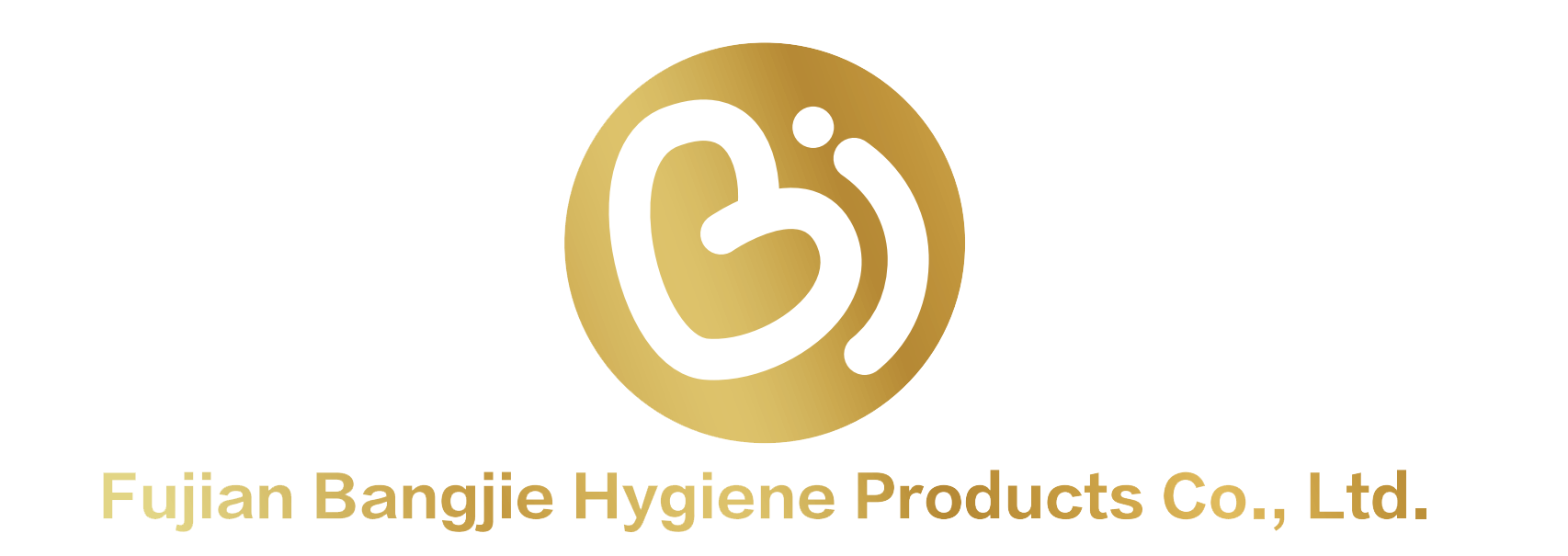အမျိုးသမီး တစ်ကိုယ်ရေသန့်ရှင်းမှုဆိုင်ရာ ထုတ်ကုန်လုပ်ငန်း၏ လက်ရှိအခြေအနေ- ကမ္ဘာ့စျေးကွက်အရွယ်အစားသည် 2024 ခုနှစ်တွင် US$ 50.35 ဘီလီယံရှိမည်ဖြစ်သည်။
၂၀၂၄ ခုနှစ်တွင် ကမ္ဘာလုံးဆိုင်ရာ အမျိုးသမီး တစ်ကိုယ်ရေ သန့်ရှင်းရေး ထုတ်ကုန်များ စျေးကွက် အရွယ်အစားသည် အမေရိကန်ဒေါ်လာ ၅၀.၃၅ ဘီလီယံ ရှိပြီး 2024-2029 ၏ ခန့်မှန်းကာလ အတွင်း နှစ်အလိုက် တိုးတက်မှုနှုန်း 6.1% ဖြင့် တိုးလာမည်ဟု မျှော်လင့်ရသည်။
စျေးကွက် Driver ခွဲခြမ်းစိတ်ဖြာခြင်း။
လုပ်ငန်းခွင်အမျိုးသမီးဦးရေ တိုးလာခြင်း၊ ကျန်းမာရေးပြဿနာများ ကြီးထွားလာခြင်း၊ အမျိုးသမီးစာတတ်မြောက်မှု တိုးတက်လာခြင်းနှင့် မီးယပ်ကျန်းမာရေးနှင့် တစ်ကိုယ်ရေသန့်ရှင်းမှုဆိုင်ရာ အသိပညာများ မြှင့်တင်ပေးခြင်းတို့သည် ကမ္ဘာလုံးဆိုင်ရာ အမျိုးသမီး တစ်ကိုယ်ရေသန့်ရှင်းရေး ထုတ်ကုန်များ စျေးကွက်ကို ကြီးထွားလာစေမည့် အဓိကအကြောင်းရင်းများဖြစ်သည်။
သုတေသနပြုချက်များအရ ကမ္ဘာလုံးဆိုင်ရာ အမျိုးသမီး လုပ်သားအင်အားမှာ ၄၈.၅ ရာခိုင်နှုန်းခန့်ရှိသည်။ ကုမ္ပဏီများသည် လုပ်ငန်းခွင်တစ်ကိုယ်ရေသန့်ရှင်းရေးကို ပိုမိုအလေးထားဆောင်ရွက်ကြပြီး ဝန်ထမ်းများဖျားနာမှုဖြစ်နိုင်ခြေကို လျှော့ချပေးပါသည်။ အမျိုးသမီးများအတွက် သင့်လျော်သောပတ်ဝန်းကျင်တစ်ခုဖန်တီးရန် လုပ်ငန်းခွင်တွင် အခမဲ့ tampons သို့မဟုတ် သန့်ရှင်းရေးသုံးရေစင်များ တပ်ဆင်ရန်လည်း စီစဉ်လျက်ရှိသည်။
ရာသီခွက်များ၊ မီးယပ်ဓာတ်ပြားများ၊ နှင့် အလွန်စုပ်ယူနိုင်သော ဓမ္မတာလာအတွင်းခံများကဲ့သို့သော ရာသီလာချိန်သုံးပစ္စည်းများသည် စားသုံးသူများကြားတွင် ပိုမိုရေပန်းစားလာပါသည်။ ကုမ္ပဏီများသည် သန့်ရှင်းရေးသုံး လက်သုတ်ပုဝါများကို စွန့်ပစ်ရန်နှင့် သဘာဝပတ်ဝန်းကျင်ဆိုင်ရာ စည်းမျဉ်းများကို လိုက်နာရန် အပင်များမှ ထုတ်ယူထားသော ဇီဝပါဝင်ပစ္စည်းများဖြင့် ဖွဲ့စည်းထားသော ဇီဝပျက်စီးနိုင်သော ကုန်ကြမ်းများကို စတင်လက်ခံနေပြီဖြစ်သည်။
ထို့အပြင် ကမ္ဘာ့ဘဏ်အုပ်စု၏ အဖွဲ့အစည်းအများအပြားသည် လူတစ်ဦးချင်းစီ၏ ရာသီသန့်ရှင်းရေးနှင့် ကျန်းမာရေးဆိုင်ရာ ကျန်းမာရေးအသိပညာပေးနိုင်ရန် ရန်ပုံငွေများ စုဆောင်းခဲ့ကြသည်။ တစ်ချိန်တည်းတွင်၊ အမျိုးသမီးများ၏ တစ်ကိုယ်ရေသန့်ရှင်းမှုဆိုင်ရာ ထုတ်ကုန်ထုတ်လုပ်သူများသည် ဝင်ငွေနည်းနိုင်ငံများနှင့် ဝင်ငွေအလယ်အလတ်ရှိနိုင်ငံများရှိ ကမ်ပိန်းများကို အာရုံစိုက်နေပြီး ဓမ္မတာလာနေသော အမျိုးသမီးများအား ၎င်းတို့၏ရာသီကို စီမံခန့်ခွဲနည်းကို သင်ကြားပေးကာ သန့်ရှင်းရေးထုတ်ကုန်များအတွက် ကမ္ဘာလုံးဆိုင်ရာ ၀ယ်လိုအားကို မြင့်တက်စေကာ စျေးကွက်၀င်ငွေတိုးလာစေရန် လှုံ့ဆော်ပေးလျက်ရှိသည်။
ကန့်သတ်ချက်များကို လေ့လာခြင်း။
ဓမ္မတာမသန့်ရှင်းခြင်းနှင့်ပတ်သက်၍ လူမှုရေးတားမြစ်ချက်များကြောင့် အမျိုးသမီးအများစုသည် tampons နှင့် sanitary pad ကဲ့သို့သော ရာသီကျန်းမာရေးအတွက် လိုအပ်သောအရင်းအမြစ်များကို သုံးစွဲခွင့်မရှိပါ။ မိန်းကလေးများသည် ဓမ္မတာလာစဉ် အတန်းပျက်ခြင်း သို့မဟုတ် သွေးဆင်းသည့်အခါ အဆင်မပြေခြင်းမှာလည်း အခြေခံအသိပညာနည်းပါးခြင်းကြောင့် ဖြစ်သည်။ ကမ္ဘာ့ဘဏ်၏ အဆိုအရ အိန္ဒိယနိုင်ငံ ကျေးလက်ဒေသရှိ ဆယ်ကျော်သက် မိန်းကလေးများ၏ ၆၀ ရာခိုင်နှုန်းနီးပါးသည် ရာသီသွေးကို လူအများရှေ့တွင် ဆွေးနွေးခြင်းသည် မသင့်လျော်ဟု ယုံကြည်ကြသည်။ ထို့အပြင် အရှေ့အလယ်ပိုင်းနှင့် မြောက်အာဖရိကဒေသတွင် အမည်းစက်နှင့် မိလ္လာမလုံလောက်မှုကြောင့် ဓမ္မတာလာနေသောကလေးများသည် ကျောင်းတက်ရန် တွန့်ဆုတ်နေနိုင်ကာ ကလေးများ၏ပညာရေးကို တိုက်ရိုက်ထိခိုက်စေနိုင်သည်။
စျေးကွက်အပိုင်း ခွဲခြမ်းစိတ်ဖြာခြင်း။
ကမ္ဘာလုံးဆိုင်ရာ အမျိုးသမီး တစ်ကိုယ်ရေသန့်ရှင်းရေး ထုတ်ကုန်များ စျေးကွက် အပိုင်းများကို လေ့လာခြင်း။ | ||
သဘာဝအရ |
တစ်ကြိမ်သုံး |
တစ်ခါသုံးထုတ်ကုန်များသည် 2024 ခုနှစ်တွင် စျေးကွက်ဝေစုအကြီးဆုံးဖြစ်လိမ့်မည်၊ မီးယပ်သန့်ရှင်းရေးကို ပိုမိုသိရှိလာစေရန်နှင့် pads၊ tampons နှင့် menstrual pads ကဲ့သို့သော သန့်ရှင်းရေးသုံးပစ္စည်းများကို တိုးမြှင့်အသုံးပြုခြင်းကြောင့်ဖြစ်သည်။ ထို့အပြင်၊ အော်ဂဲနစ်ဝါဂွမ်းဖြင့်ပြုလုပ်ထားသော တစ်ခါသုံး pads များ သည် ဓာတုဗေဒပစ္စည်းများ မသုံးဘဲ တိုးပွားလာသော ၀ယ်လိုအားသည် ဤဈေးကွက်အပိုင်းကို ကြီးထွားလာစေပါသည်။ |
ထုတ်ကုန်အမျိုးအစားအလိုက် |
သန့်ရှင်းရေးလက်သုတ်ပုဝါ |
သန့်စင်သောလက်သုတ်ပုဝါအပိုင်းသည် 2024 ခုနှစ်တွင် အကြီးဆုံးစျေးကွက်ဝေစုအတွက် ပါဝင်မည်ဖြစ်သည်။ . သန့်ရှင်းရေးသုံး လက်သုတ်ပုဝါများသည် ကမ္ဘာပေါ်တွင် အသုံးအများဆုံး အမျိုးသမီး တစ်ကိုယ်ရေ သန့်ရှင်းရေးနှင့် ဣတ္ထိယ စောင့်ရှောက်မှု ထုတ်ကုန်များဖြစ်ပြီး သန့်စင်သော လက်သုတ်ပုဝါများကို စုပ်ယူနိုင်မှု တိုးမြင့်စေရန် အထူးစုပ်ယူနိုင်သော ပိုလီမာ (SAP) ကို အသုံးပြု၍ ထုတ်လုပ်ထားသည်။ ထုတ်လုပ်သူများသည် မကြာသေးမီက ထုတ်ကုန်များတွင် အနံ့နှင့် ပိုးသတ်ဆေးပါဝင်ပစ္စည်းများကို ထုတ်ကုန်များ၏ လုပ်ဆောင်နိုင်စွမ်းကို မြှင့်တင်ပေးပြီး စားသုံးသူများ စိတ်ကျေနပ်မှုကို တိုးပွားစေပါသည်။ |
ကမ္ဘာ့ အမျိုးသမီး သန့်ရှင်းရေး ထုတ်ကုန်များ ဈေးကွက်အရွယ်အစားကို ဆန်းစစ်ခြင်း
ဒေသဆိုင်ရာစျေးကွက် ဆန်းစစ်ခြင်း။
မြောက်အမေရိကသည် 2024 တွင် အကြီးဆုံးစျေးကွက်ဝေစုကို သိမ်းပိုက်မည်ဖြစ်သည်။ ဒေသတွင်းတွင် အလုပ်လုပ်သော အမျိုးသမီးဦးရေ တိုးလာခြင်းနှင့် တစ်ခါသုံး ဂေဟစနစ်သဟဇာတဖြစ်သော တစ်ကိုယ်ရေသန့်ရှင်းမှုဆိုင်ရာ ထုတ်ကုန်များကို လက်ခံသုံးစွဲခြင်းသည် စျေးကွက်ကြီးထွားမှုကို တွန်းအားပေးသည့် အဓိကအချက်နှစ်ချက်ဖြစ်သည်။ ထို့အပြင် သန့်ရှင်းမှု၊ တစ်ကိုယ်ရေ သန့်ရှင်းရေးနှင့် ဓမ္မတာလာစဉ် သန့်ရှင်းရေး လက်သုတ်ပုဝါများ ဝတ်ဆင်ရန် လိုအပ်ကြောင်း အသိပညာများ တိုးပွားလာခြင်းသည် ဒေသ၏ တိုးတက်မှုကို တွန်းအားပေးပါသည်။ ထို့အပြင် ကျန်းမာရေးစောင့်ရှောက်မှုလုပ်ငန်း၏ အရှိန်အဟုန်ဖြင့် ဖွံ့ဖြိုးတိုးတက်လာမှုနှင့် ဂေဟစနစ်သဟဇာတဖြစ်မှုနှင့် ရေရှည်တည်တံ့သော ဓမ္မတာလာထုတ်ကုန်များ ဖွံ့ဖြိုးတိုးတက်လာမှုသည် ဒေသတွင်း အမျိုးသမီး တစ်ကိုယ်ရေသန့်ရှင်းမှုဆိုင်ရာ ထုတ်ကုန်ဈေးကွက် ကြီးထွားမှုကို တွန်းအားပေးလျက်ရှိသည်။
အာရှပစိဖိတ်ဒေသရှိ စျေးကွက်တိုးတက်မှုနှုန်းသည် ခန့်မှန်းသည့်ကာလအတွင်း တည်ငြိမ်နေမည်ဖြစ်သည်။ လူဦးရေ တိုးပွားလာသည်နှင့်အမျှ ဒေသတွင်းရှိ မီးယပ်ရာသီသို့ ရောက်ရှိသူဦးရေသည်လည်း တိုးများလာကာ တစ်ကိုယ်ရေသန့်ရှင်းမှု ထုတ်ကုန်များ ၀ယ်လိုအား တိုးလာစေရန် တွန်းအားပေးလျက်ရှိသည်။ အွန်လိုင်းလက်လီစတိုးများ၊ e-commerce ဝဘ်ဆိုဒ်များနှင့် အွန်လိုင်းထုတ်ကုန်များကို ဖြန့်ဖြူးသည့် ကော်ပိုရိတ်ဝက်ဘ်ဆိုဒ်များ တိုးပွားလာမှုကြောင့် စားသုံးသူများသည် ယခုအခါ အွန်လိုင်းဖြန့်ဖြူးရေးလမ်းကြောင်းများမှတစ်ဆင့် တစ်ကိုယ်ရေသန့်ရှင်းမှုထုတ်ကုန်များကို ဝယ်ယူရန် ရွေးချယ်လာကြသည်။
ဥရောပဈေးကွက်သည် ခန့်မှန်းသည့်ကာလအတွင်း အလယ်အလတ်တိုးတက်မှုကို ဆက်လက်ထိန်းသိမ်းထားမည်ဖြစ်သည်။ ဒေသတွင်းရှိ ဗဟိုအစိုးရအေဂျင်စီများ၏ တိုးမြှင့်လုပ်ဆောင်မှုများသည် အမျိုးသမီးများ တစ်ကိုယ်ရေသန့်ရှင်းရေး ထုတ်ကုန်များအတွက် လိုအပ်ချက်ကို တွန်းအားပေးရန် မျှော်လင့်ပါသည်။





